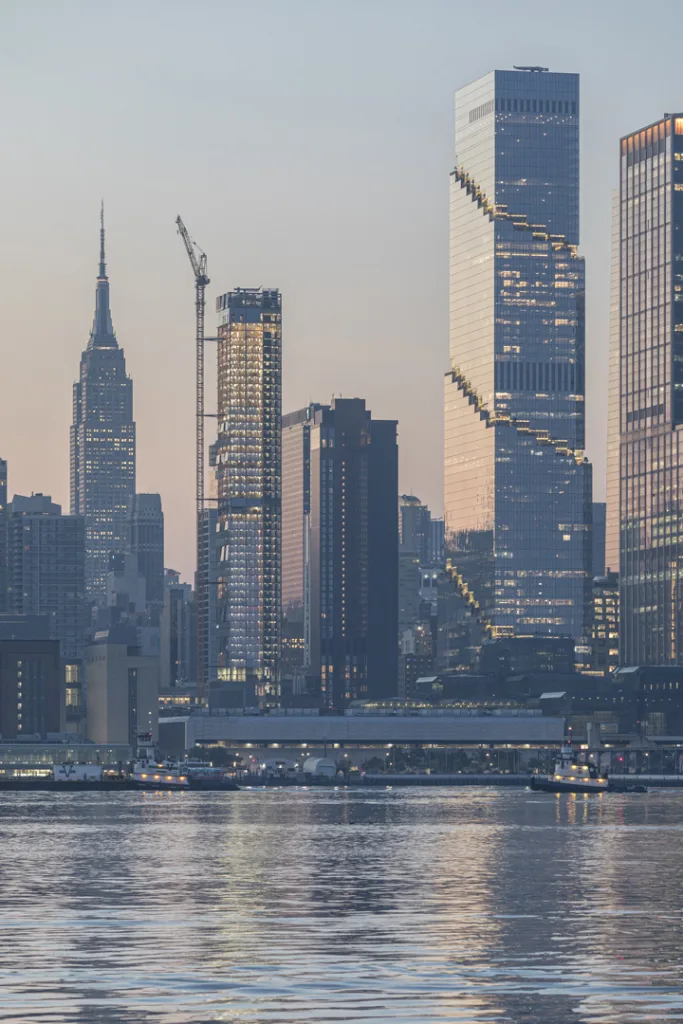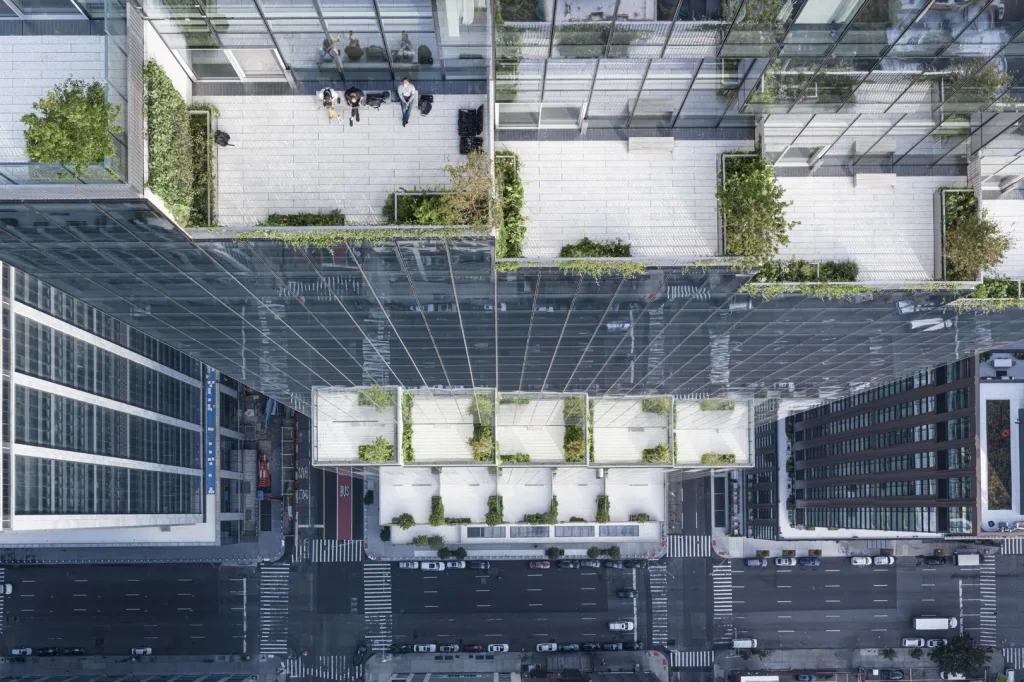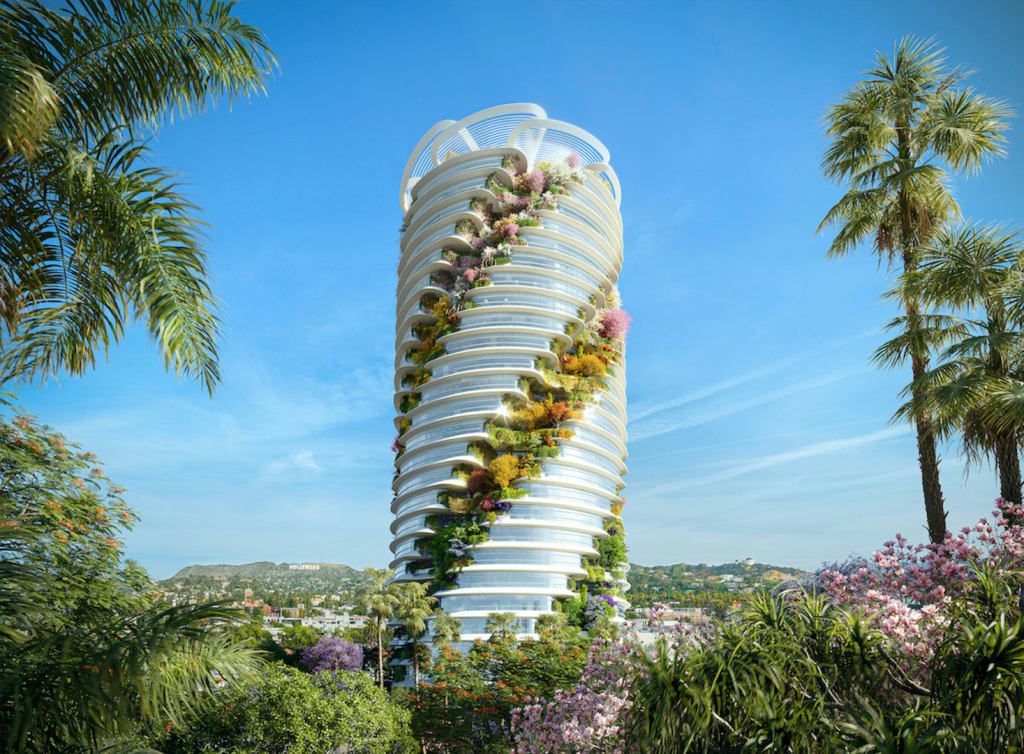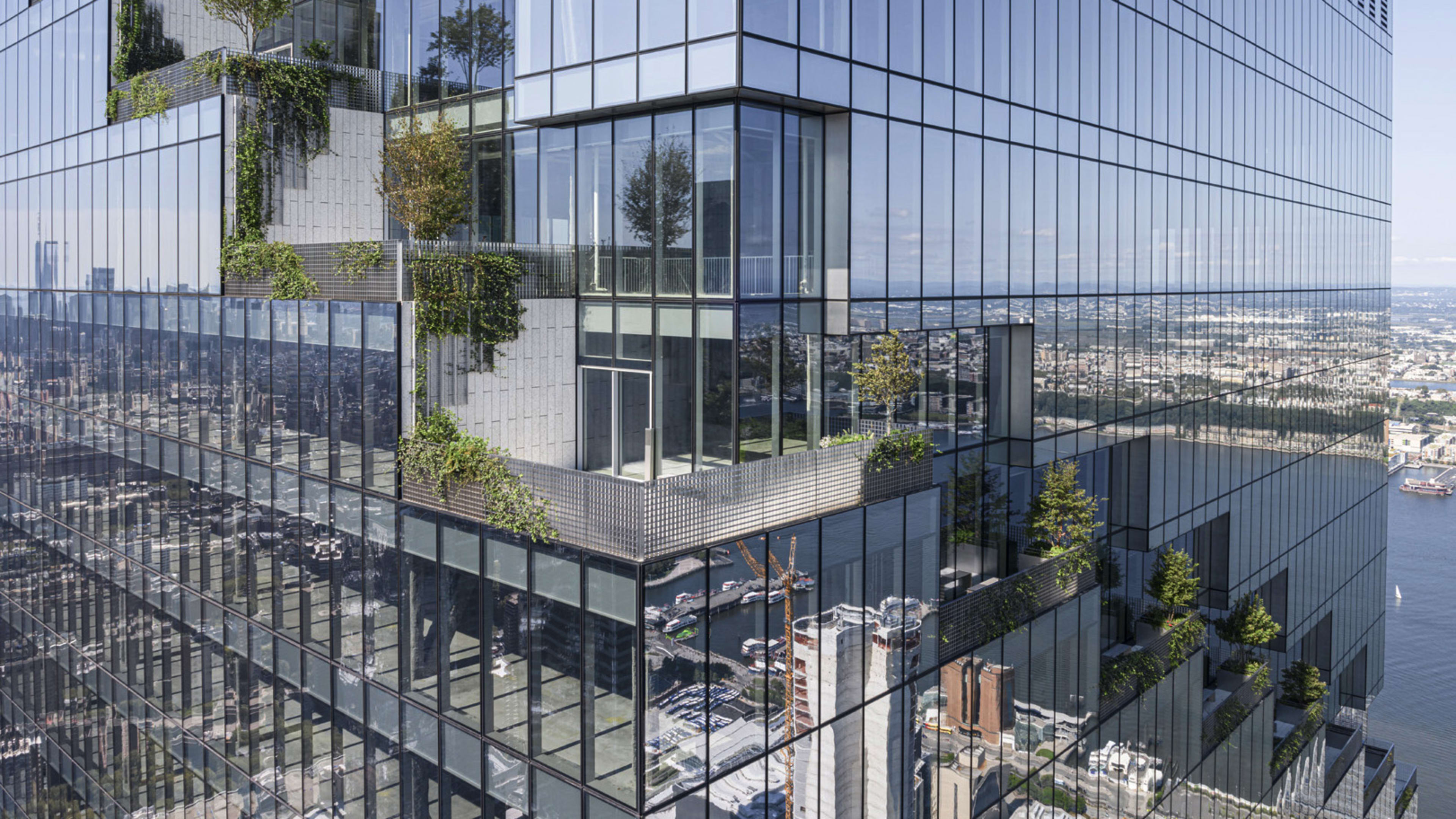Featuring dramatic cuts in the facade or portions of floor plates sliced away—a new kind of architectural detail is reshaping the exterior of high-rise towers on a global scale. Distinctive gashes are splitting the surface of new buildings with a kind of surgical intent.

There’s The Axiom, a recently completed 49-story office tower in Shanghai designed by Buro OS. It appears from one side to be a conventional rectangular tower until about halfway up, where the facade cuts back sharply to create a brief two-story indentation. The space created by shrinking back the building becomes a few large “sky terraces” that wrap almost all of the building’s three sides. A second tower, still under construction, will have a similar mid-point cutaway.
In New York, The Spiral is another new high-rise with terrace spaces carved out from its vertical edges. Designed by Bjarke Ingels Group, the 66-story office building has, as the name suggests, a spiral of gracious setbacks all the way around that translate to a series of outdoor terraces, one per floor, all with sweeping views and access to fresh air and natural light. A rarity in NYC buildings, terraces are even more scare in office towers, previously known for hermetically sealed windows and bad indoor lighting.

A recently announced project in Hollywood, dubbed The Star, multiplies this spiral concept, with carveouts encircling a cylindrical tower like a cascade of garlands from top to bottom. Designed by Foster and Partners, the $1 billion “vertical office campus” building’s renderings show lushly landscaped outdoor patios, four per floor, that decorate the glass-lined facade. If reality comes close to the renderings, the building may appear as rainbow swirls of flower petals and succulents.

Perhaps the most interesting example of high-rise scar-chitecture is One River North, a 16-story residential tower in Denver designed by MAD Architects and opening later this year. A Y-shaped section of its glass-lined facade appears to have been meticulously erased, revealing bone-like interiors. This negative space creates undulating open-air terraces for the building’s more luxe units. (Monthly rents for the larger terraced penthouses can be upwards of $10,000.) Three of these open-air decks are accessible to all residents, as is a rooftop pool and deck that seems to be a horizontal extension of the scalpel-job on the building’s vertical edge. Each a uniquely shaped- and sized-space, the cut-out terraces become a key selling point.

Some of the buildings’ scar-like slices may be more gimmicky than others, but they all tap into a growing interest of integrating outdoor space in the dense setting of a tall building. In the residential context, the gash reveals a more interesting balcony. In the office setting, it’s from a pandemic-inspired realization that people want to work in different settings and spaces throughout the day. Ripping a chunk out of a building facade or slicing away a bit of floor plate to create welcome outdoor space may seem a radical architectural move, but these projects could be a sign that high-rises will feature more sliced, diced, and gashed facades than the smooth glass towers of today’s skylines.
Recognize your brand’s excellence by applying to this year’s Brands That Matter Awards before the early-rate deadline, May 3.
